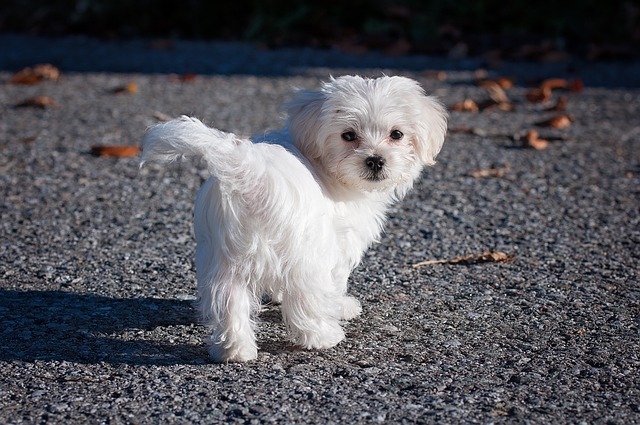


The Maltese is a small, affectionate toy breed known for its beautiful white coat and lively personality. Despite its tiny size, this dog is full of energy and charm. Maltese dogs are highly social and enjoy being the center of attention, making them excellent companions for families, singles, and elderly individuals alike. They are particularly known for their affectionate nature and are often described as "lap dogs" due to their love of cuddling with their owners. Though small, they are brave and confident, with a tendency to think they're much larger than they really are. The Maltese is also hypoallergenic, making it a great option for people with allergies.
The Maltese breed is ancient, with roots tracing back over 2,000 years to the island of Malta in the Mediterranean. It is believed that the Maltese was bred as a companion dog for the aristocracy and royalty, and its presence has been documented in art and literature throughout history. Ancient Greeks and Romans admired the breed for its beauty and temperament, and it was often kept as a pet by the elite. The breed was also popular in ancient Egypt, and it is believed that the Maltese was a favorite of Cleopatra. While the Maltese is known for being a companion dog, it was originally bred to hunt small vermin. Over time, it became a beloved pet, and today it is most commonly found as a companion dog in households worldwide.
The Maltese is a small breed, with adult dogs typically weighing between 4 and 7 pounds and standing about 7 to 9 inches tall at the shoulder. They have a graceful, compact build and are known for their flowing, silky white coat, which is one of their most distinctive features. The coat is long and straight, requiring regular grooming to keep it in top condition. Maltese dogs have a broad, rounded head, dark eyes, and a black nose that contrasts with their white fur. Their ears are drop-shaped and covered with long hair. Despite their small size, Maltese dogs have a confident, alert expression, and they carry themselves with elegance. Their tails are long, often carried in a gentle curl over their backs.
The Maltese is known for its affectionate, friendly, and playful temperament. It forms strong bonds with its family and enjoys spending time with its human companions. Maltese dogs are often described as being "lap dogs" because they love to cuddle and be close to their owners. They are particularly good with children and can be a great choice for families, though they should be supervised around very young children, as they are small and delicate. Maltese dogs can also get along well with other pets, including dogs and cats, if properly socialized. However, due to their small size and confident nature, they may try to dominate larger dogs. They tend to be brave and might be vocal, alerting their owners to strangers or potential threats. While generally friendly, they can be wary of unfamiliar people or animals and may need some time to warm up.
The Maltese is an energetic breed for its size and enjoys daily exercise, though its activity needs are generally lower than those of larger breeds. A short daily walk and playtime in the yard or indoors should suffice to keep this dog happy and healthy. Maltese dogs are playful and love interactive games such as fetch or tug-of-war. Due to their small size, they don't require extensive exercise, but it is still important to provide mental stimulation to keep them engaged. Without enough physical and mental activity, a Maltese may become bored or develop behavioral problems. Although they can adapt well to apartment living, it’s important to provide them with opportunities to exercise and interact with their environment regularly.
Training a Maltese can be an enjoyable experience, as they are intelligent and eager to please. However, their independent nature can sometimes make them a little stubborn, so consistency and patience are key. Positive reinforcement, including treats and praise, works best for motivating this breed. Maltese dogs tend to be sensitive to harsh training methods, so gentle, reward-based techniques are ideal. Early socialization is important to ensure that the Maltese is comfortable around strangers, other pets, and different environments. This breed tends to bond closely with its owners and can sometimes develop separation anxiety if left alone for long periods. Therefore, training should also focus on teaching the Maltese to be comfortable when left alone, and crate training may be helpful in this regard.
The Maltese is generally a healthy breed, but like all dogs, it is prone to certain health conditions. Some of the most common health issues in Maltese dogs include dental problems, patellar luxation (dislocation of the kneecap), and eye issues such as cataracts. Regular veterinary checkups are essential to monitor their health and detect any potential problems early. Because of their long, silky coat, Maltese dogs require regular grooming to prevent matting and tangling. Daily brushing is recommended, along with occasional baths to keep the coat clean and shiny. Their ears should be checked regularly for infections, and their nails trimmed as needed. Dental care is also important for this breed, as they are prone to dental issues, so regular tooth brushing and dental checkups are recommended.
The average lifespan of a Maltese is around 12 to 15 years. With proper care, including a balanced diet, regular exercise, and routine veterinary visits, a Maltese can enjoy a long and healthy life. Like many small breeds, the Maltese is generally prone to a few hereditary health problems, but with regular care and a good diet, most can live well into their teenage years. It's important to ensure that they stay at a healthy weight and have a consistent routine to keep them physically and mentally fit as they age.
© copyright Dog Compendium 2024 - 2025